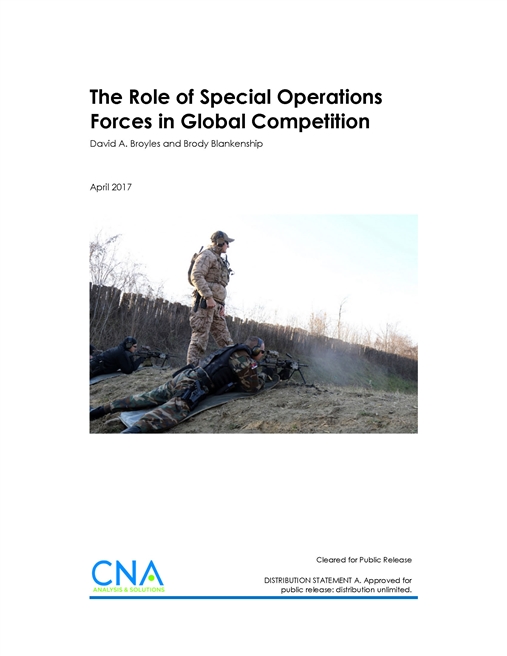Nations have a variety of options for exerting influence, such as through diplomatic, military, or economic means. In recent years, some nations have shifted to more ambiguous activities for exerting global influence, in attempts to achieve benefits normally obtained through conventional war, but without triggering such a war.
A variety of evolving terms describe this shift, including “ambiguous warfare,” the “Gray Zone,” and “competition short of armed conflict.” Regardless of the terminology, the common theme of these ideas is that adversaries are acting to win today, without entering open conflict. In contrast, the traditional U.S. approach in pre-conflict environments, often called “Phase 0,” has been on preparing for future open conflict; these actions have primarily consisted of planning and building partnership capacity through activities such as security force assistance. Thus, while the United States prepares for future open conflict, adversaries act purposely today to prevent the environment from ever entering that future conflict.
This disparity in approaches suggested a need to shift the U.S. focus toward winning today. Given the evolving nature of the global environment and the concepts describing them, we wanted to use an approach that could be tailored to the specific situation. We identified a “non-traditional” counteractive approach for activities today, which describes de-escalating, neutralizing, and escalating actions, as depicted in the graphic below.
De-escalating actions attempt to resolve sources of conflict or keep the environment from shifting to open conflict. Neutralizing actions attempt to stop adversary actions. And escalating actions attempt to shift the environment into open conflict. These actions generally involve a high degree of sophistication, a high degree of risk, an ability to operate clandestinely or covertly, and an understanding of the surrounding political environments. We combined these ideas in the figure below, which demonstrates the traditional and non-traditional approaches to Phase 0, and shows examples of activities in each. The actions listed are meant to be demonstrative and not exhaustive, and the adversary’s response ultimately determines whether an action de-escalates, neutralizes, or escalates.
This counteractive approach requires capabilities that largely align with U.S. Special Operations Forces (SOF) competencies. The qualities of SOF include the ability to operate in politically sensitive environments, under time-sensitive or high-risk conditions, in clandestine, covert, or low-visibility modes, in working with or through indigenous force, with regional and cultural expertise. SOF have focused on counterterrorism, counterinsurgency, and direct action missions over the past decade, but in order to address the ambiguous activities occurring today, they will need to give more attention to other missions in the SOF toolkit (such as unconventional warfare, special reconnaissance, and preparation of the environment). Although conventional forces have the ability to perform some of these missions, such as the ones under the “traditional” Phase 0, SOF are trained, are equipped, and have the authorities to perform the missions listed under the “non- traditional” Phase 0, particularly the clandestine and covert activities.
Special operations forces have a greater role to play in today’s global competition through a counteractive approach to adversary maneuvers. SOF have been doing some of these activities, but the United States has only recently recognized that adversaries are exploiting the U.S. view of Phase 0 as “preparing for future war” vice “competing in the here and now.” As a result, the United States should aggressively explore the detailed actions that SOF can execute through a counteractive approach in the regions that matter for global competition taking place today.
Download reportApproved for public release: distribution unlimited.
Details
- Pages: 58
- Document Number: DRM-2017-U-015225-1Rev
- Publication Date: 4/3/2017
